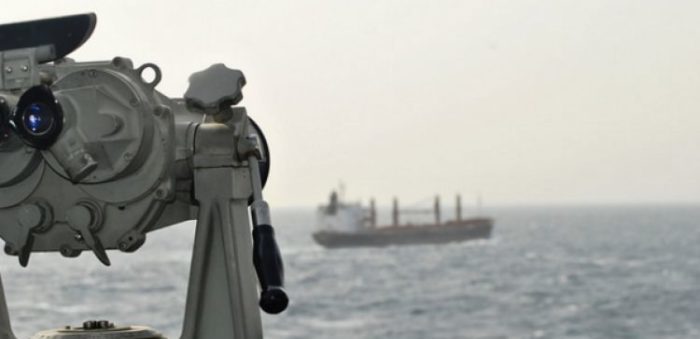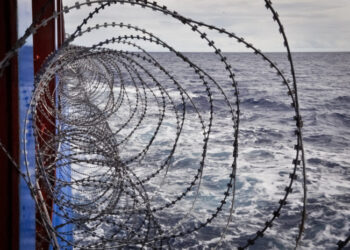While speaking at the last SAFETY4SEA Conference in Cyprus, Mr. Dimitris Maniatis, Chief Commercial Officer, Diaplous Maritime Services, provided a recap of the current maritime security status, focusing on key high risk areas, such as the Indian Ocean region and West African waters. For the Gulf of Guinea, he stressed, Piracy and Maritime Aggression is never ending. However, there are always ways to successfully mitigate risk, deter threat and avoid loss, he concluded.
‘Security’ is the state of being free from danger or threat which is very conducive to doing business.
According to IMB statistics:
- Nigeria is the winner concerning the number of incidents;
- Indonesia is the second runner up;
- The most affected regions are Africa and South East Asia, as expected;
- Unexpectedly the third region is the Americas.
Also, according to IMB numbers in 2016 things were pretty calm; But in 2017 and especially in 2018, the numbers of activity rose and the numbers of seafarers that were affected was on the rise as well. In 2018, more bulkers were attacked than any other kind of vessel. Third runner up is container vessels.
The top 4 managing countries with incidents in 2018 are:
- Singapore;
- Greece;
- Hong Kong;
- Germany.
The IMB officially stated that 48% of GoG incidents are under reported, So in 2018 alone, in the Gulf of Guinea, we had 152 incidents most of which were attacks, some of these led to hijackings and kidnap for ransom events.
If we look at the high risk area of the Indian Ocean:
- 41 reported incidents in the last 12 months. I stress the fact ‘reported’ which means IMB is giving as these facts;
- 10 attacks;
- 1 Hijacking;
- 10 suspicious approaches approaches
- 4 PAG’s
- 16 criminal boarding’s
The choke point between the Red Sea and the Gulf of Aden, commonly known as Bab-el-Mandeb, is where most of the action takes place not just because of Somali-based piracy, but also because of the overspill of the Yemen conflict into the maritime domain. We also see a lot of smuggling activity: weapons, drugs, people, etc.
But most importantly, things have changed, and now we have drones or remotely controlled skiffs with explosives that target port facilities.
An incident targeting Jizan Port was stopped by the Saudi Forces in September 2018:
The Royal Saudi Navy Forces detected the movement of two remote control explosive boats headed to the port of Jizan. They were intercepted and destroyed… which has led to minimal damage
This event has led to heightened security measures and now any tanker going to Jizan can only do cargo operations during daylight while during night hours, vessels are asked to clear the port and return the next morning to continue cargo. This naturally leads to tremendous delays.
The truth about the Indian Ocean Region is:
- Somali based piracy is dormant but not extinct;
- The Yemen conflict overspills in to the maritime domain;
- Smugglers take the opportunity to operate in a state of lawlessness to do their own business;
- Coalition warships are mainly focused on the war in Yemen and antiterrorism missions.
- EU NAVFOR is the only task force with a clear anti-piracy mandate and currently operates 2 vessels;
- Conditions on land have not change and are conducive to pirate action group operations.
We’re trying to make the Indian Ocean safer for Mariners and global trade. Maritime Aggression affects more than a quarter of the Seafarers that have sought crisis response from Sailors Society and nearly ALL Seafarers preparing to cross the globes HRA’s.
It is agreed by the maritime industry and everyone around it, that armed security teams on board merchant vessels have changed the “tide” making HRA transits safer for world trade and that’s why we’ve seen the numbers of activity in the Indian Ocean fall, while in other regions that we do not operate in the same way such as South East Asia, they’re on the rise.
For us as a PMSC, the pride is in safe guarding people, making sure no one gets hurt and that everyone is free from danger to do their job and return to their families.
Yet, there are a lot of ‘bad apples’ amongst us, unfortunately. You have to be very careful on whom you contract.
Moving on to the Gulf of Guinea, High Risk Area:
- 140 reported incidents in the last 12 months;
- 29 attacks;
- 20 hijackings;
- 8 boarding’s;
- 58 criminal boarding’s;
- 18 suspicious approaches;
- 7 PAG’s.
Most of the action is in Eastern Nigeria of course, around the Niger Delta region.
The Laetitia V was attacked and three crewmembers were taken.
The Glarus, a very widely publicized event. Swiss-flagged bulker 19 crewmembers, 12 were taken.
The events of Pointe Noire in October 2018 showed us what a pirate action group can do in just 48 hours:
- 3 Vessels Hijacked;
- 15 Crew Kidnapped;
- 1 Crew Injured;
- 1 LPG Tanker attacked during bunker ops.
The solution against maritime aggression in West Africa:
- Proper risk evaluation is key;
- Good understanding of the operating environment and the risks the operation is going to face;
- Realistic risk mitigation measures;
- Working with a legitimate security provider so that you don’t have other kinds of trouble;
- Building a solid relationship of trust with your security provider.
Nigeria has elections; therefore, we should wait to see what is going to happen following. Generally, Nigeria is very tricky during elections time. But, piracy and Maritime Aggression in the GoG is never ending.
The Oil Export Revenues, the Militias and the Crooks are all part of the equation.
Corruption and insecurity is in all West African countries as well as poverty, for many the only opportunity to escape this sad life is through criminality, aiming to become prosperous.
But it’s not just ocean going vessels that need security.
For example, the FPSO Egina, that we supported its delivery to Nigeria and the sailing to her operating position 110 NM South of Bonny Island, Nigeria, has been targeted again and again by the Niger Delta Avengers who are the most active militant group in Nigeria. Daily threats were issued against this operation but due to the adequate security she received there were zero incidents.
In conclusion, risk is apparent and Pirates / Terrorists / Militants / Robbers / Psychopaths are all out there looking for the right moment, the weak spot and the opportunity to attack. However, there are ways to successfully mitigate risk, Deter Threat and Avoid Loss.
Don’t allow your business to become their victim!
Above text is an edited version of Mr. Dimitris Maniatis’ presentation during the 2019 SAFETY4SEA Cyprus Conference.
View his presentation here.
The views presented hereabove are only those of the author and not necessarily those of SAFETY4SEA and are for information sharing and discussion purposes only.
Dimitris Maniatis, Chief Commercial Officer, Diaplous Maritime Services
 Dimitris has a comprehensive background on security in hostile regions which started right after his days with the Hellenic Navy. Starting in 2000 and under contract with the Hellenic Ministry of Foreign Affairs, he spent 7 years in Afghanistan and Pakistan, fulfilling various roles in support of European Intelligence Agencies, ISAF, UN Organizations and more. During the first years of his involvement in Central Asia operations, he managed the security and logistics of all Hellenic NGO’s operating region wide and lead missing persons recovery missions in the Hindukush. Dimitris also participated under contract, on missions in Cambodia, Egypt, The Balkan Region, The Middle East and Africa. In 2009 the menace of Somali Based Piracy was at its height and Dimitris was given the opportunity to emerge in this new industry called Maritime Security. After completing specialized training, he joined the ranks of the Armed Security Teams safe guarding vessels in the Indian Ocean HRA and became Team Leader shortly after. While performing these duties he continued his university education by completing an MBA on shipping which in 2013 allowed him to immerse in the business side of the maritime security industry. In his role as Chief Commercial Officer of Diaplous Maritime Services his focus is mainly on the design, development and implementation of the company’s commercial strategy, meeting the goals and growth set. The above goes hand in hand with new business development, compliance, quality and making sure everyone has a positive experience getting the job done in a safe, ethical and honorable manor.
Dimitris has a comprehensive background on security in hostile regions which started right after his days with the Hellenic Navy. Starting in 2000 and under contract with the Hellenic Ministry of Foreign Affairs, he spent 7 years in Afghanistan and Pakistan, fulfilling various roles in support of European Intelligence Agencies, ISAF, UN Organizations and more. During the first years of his involvement in Central Asia operations, he managed the security and logistics of all Hellenic NGO’s operating region wide and lead missing persons recovery missions in the Hindukush. Dimitris also participated under contract, on missions in Cambodia, Egypt, The Balkan Region, The Middle East and Africa. In 2009 the menace of Somali Based Piracy was at its height and Dimitris was given the opportunity to emerge in this new industry called Maritime Security. After completing specialized training, he joined the ranks of the Armed Security Teams safe guarding vessels in the Indian Ocean HRA and became Team Leader shortly after. While performing these duties he continued his university education by completing an MBA on shipping which in 2013 allowed him to immerse in the business side of the maritime security industry. In his role as Chief Commercial Officer of Diaplous Maritime Services his focus is mainly on the design, development and implementation of the company’s commercial strategy, meeting the goals and growth set. The above goes hand in hand with new business development, compliance, quality and making sure everyone has a positive experience getting the job done in a safe, ethical and honorable manor.































































